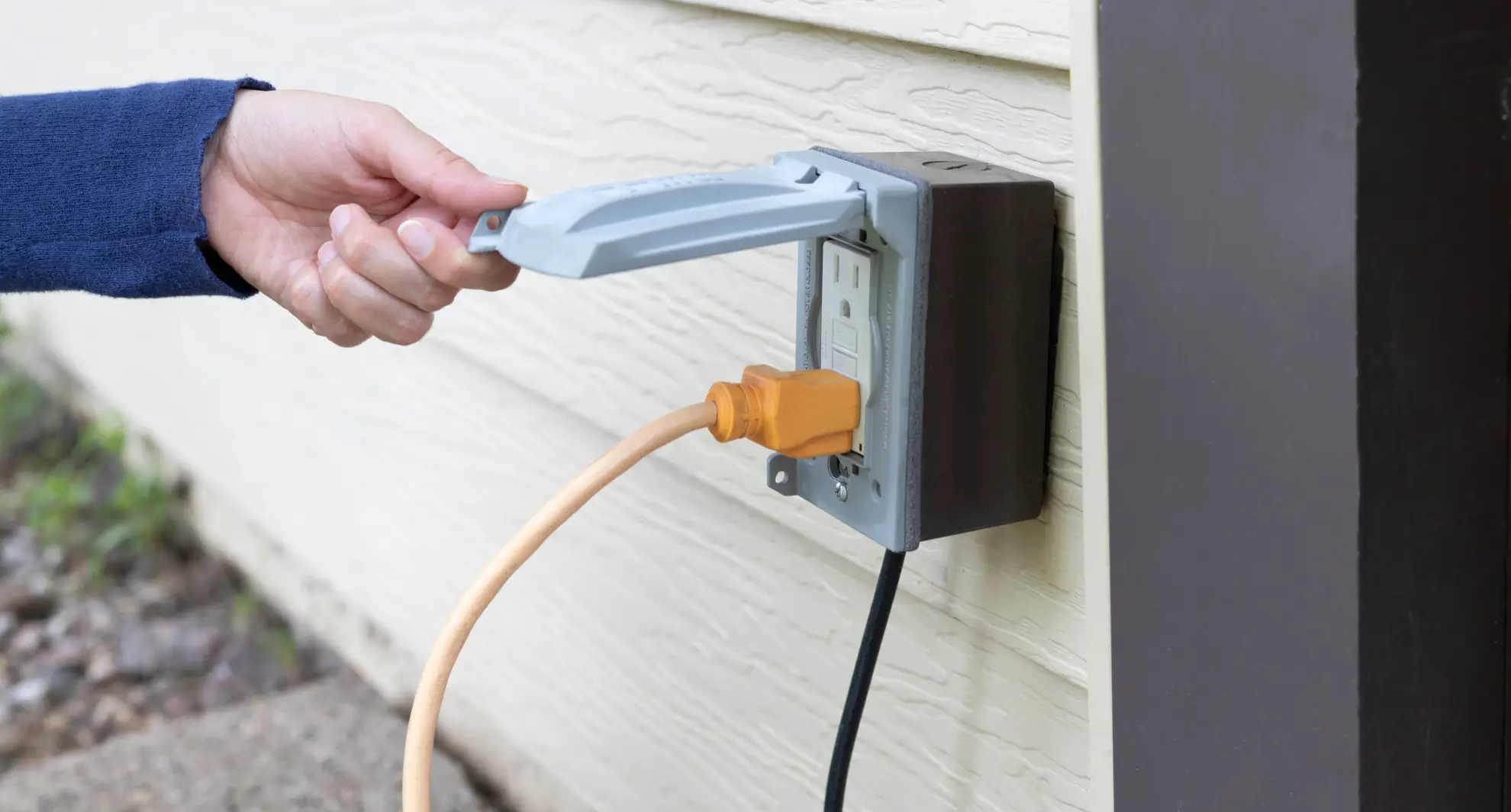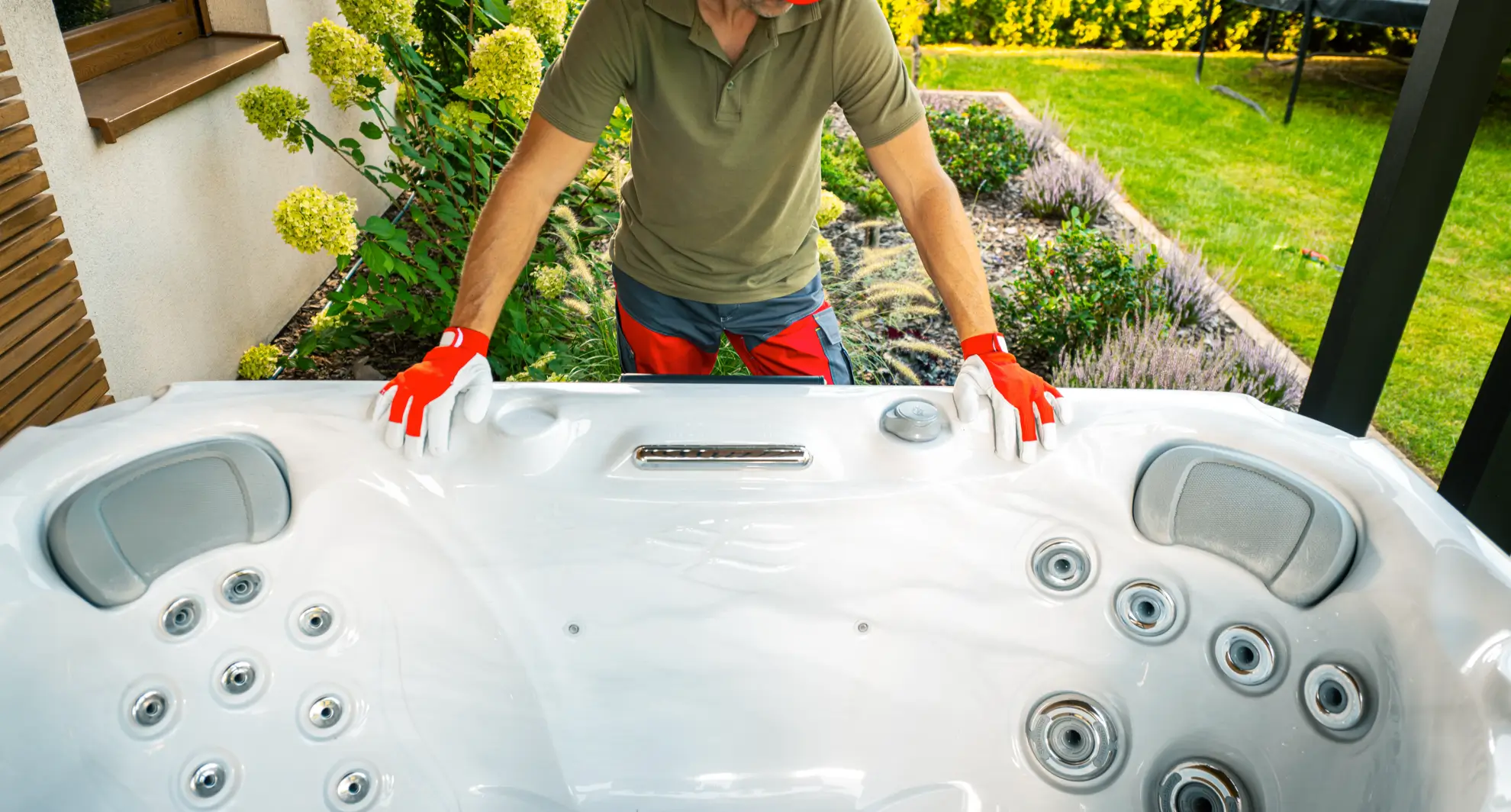
Mr. Electric outlines a straightforward process for installing a hot tub safely and efficiently.
|
Relaxing in a hot tub is a great way to unwind after a tough day at work. A hot tub soak soothes your mind and body, and it’s a leisurely way to reconnect with your family after a long day. Hot tubs provide many health benefits, too, including better sleep.
Fortunately, learning how to install a hot tub is possible, but it’s always best to leave this task to the experts. While it may appear like a simple DIY project, installing a hot tub involves a range of technical requirements, from ensuring the electrical system is up to code to preparing the perfect foundation. Mr. Electric® can handle the electrical portion of your hot tub installation, ensuring everything is done safely and up to code.
Before you begin, don’t forget to check your local zoning regulations or homeowners' association requirements to make sure you're in compliance. Once you’ve got the green light, here’s a breakdown of the five essential steps to installing your hot tub. While some steps can be tackled on your own, others like the electrical setup, should always be left to professionals like the electricians at Mr. Electric®.
5 Steps to Installing a Hot Tub
Installing a hot tub can transform your backyard into a luxurious retreat, and proper installation is key to ensuring the safety and efficiency of the unit. Here’s a breakdown of the five essential steps you’ll need to take to install a hot tub correctly, from selecting the perfect location to filling it up and enjoying your new oasis.
Step 1. Select a suitable location for your hot tub
Choosing the best location for your hot tub is essential. Study your yard and try to envision your ideal hot tub space.
Consider neighbors, traffic flow, desired level of privacy, and anything else that may interfere with your new sanctuary. Do you want the spa to be a focal point or do you prefer to have it nestled in a quiet corner of the yard? Are you thinking of a shady spot or one that catches the afternoon sun? You may want to install fencing or a gazebo for safety and privacy or add an awning to reduce unwanted sun exposure.
Think about how you will move the tub from the delivery truck to your selected location with minimal tools and manpower. Although you could rent a crane, pre-planning is easier and more cost-effective!
Beyond aesthetics, there are a few practical considerations you'll want to keep in mind:
- Firm, level ground or flat surface.
- A location that is at least 10 feet away from any overhead power lines.
- Adequate clearance between the exterior of your home, outbuildings, fences, and other objects. You’ll need space to safely enter and exit.
- Close proximity to a GCFI dedicated electrical circuit and a water source.
- Easy access from the house. Is there a walkway that leads to the location, or can one be easily installed? You don’t want to get grass or sand in the tub, and if you live in a cooler climate, you may want a quick path indoors, too.
- A space that doesn’t collect excess rainwater or falling tree leaves.

Step 2. Prepare a suitable foundation for the hot tub
Installing a hot tub directly on the ground, especially over soft dirt or sand, is not recommended. The weight of the water-filled unit may cause shifting, leaving the hot tub with an uneven foundation.
Before installing on an existing deck, be sure to check load limits and structural integrity. How to install a hot tub properly on a raised deck may require professional consultation and/or a structurally engineered design. Figure out the load requirements by adding the dry weight of the unit, the weight of the water (multiply the number of gallons the tub holds by 8.3 to determine this), and the weight of occupants (multiply the tub’s maximum capacity by 185 pounds to get an average figure. For example, if the tub’s capacity is 6 people, multiply 6 by 185).
Once you have the total weight, divide this figure by the tub’s square footage to determine the framing required for the load. As a general guideline, expect the design load requirements to be at least 105-115 pounds per square foot. A concrete slab is a good long-term choice for a hot tub foundation. Be sure that the slab extends a few feet beyond all sides of the hot tub. If you’re pouring a new slab, run electrical wiring in a conduit before pouring. Reinforced concrete that is a minimum of four inches thick is recommended, and the slab should be designed to handle the weight. Use the above instructions to calculate anticipated weight and plan accordingly.
Important: Do not place the hot tub until the concrete is fully cured.
Other suitable bases for hot tubs include gravel, paver stones, or prefabricated hot tub pads. These options may be less costly or permanent than concrete slabs or decks. Here, too, you need to make sure that the ground underneath is hard-packed dirt and that materials used are level before placing the hot tub.
Step 3. Upgrade electrical outlets
Your electrical system needs to safely meet the power requirements of the unit. Between heating components and pumps, hot tubs pull a lot of electricity. In most cases, a 220-240 volt/50 amp circuit with a GCFI (ground-fault circuit interrupter) outlet will be necessary to safely operate the tub. Some models may require 60 amp service.
Hot tub circuit and GCFI installation should only be done by a professional. The National Electrical Code (NEC) also requires that an emergency shut-off switch be installed at least five feet away from the hot tub, and directly within line of sight.

Step 4. Position the tub
Once you’ve wrestled the tub to your desired location, be sure to orient the tub appropriately. Entry ladders or steps should be conveniently placed away from obstacles. Always put the tub in a position that provides quick, easy access to control panels, and make sure there is adequate clearance to easily remove the cover. If you are placing the tub in a recessed position within a deck, consider installing with the edge about two feet above the deck floor, rather than flush with the floor. This will help prevent accidental tumbles into the water and provide extra seating, too. If you have children, be sure to add safety precautions like locking covers and alarms. Your insurance may have additional requirements. Be sure to check!
Step 5. Fill it up!
Once your tub is set up and wired correctly, follow manufacturer instructions to operate. Begin by turning off the electricity to the tub at the circuit breaker. Make sure the drain valve is closed and that filters are placed properly.
You may want to wipe the interior with a mild, non-foaming cleaner before filling. Use a garden hose to fill with cold, clean water to the fill line. Inspect for leaks, paying special attention to fittings behind the equipment door.
Tighten fittings if necessary. Once the tub is filled and there are no leaks, restore power at the breaker, set the controls, and add water treatment chemicals. Once the water is warm—which may take up to 8 hours—settle in and enjoy!
Let Mr. Electric Help with Your Hot Tub Installation
From installing dedicated hot tub circuits to GFCI protection, Mr. Electric makes sure your electrical system is ready for a worry-free soak. Mr. Electric is here to handle all things electrical for your new hot tub installation, including everything is set up safely and in compliance with local codes. With the Neighborly Done Right Promise®, your satisfaction is our priority. Contact your local Mr. Electric or schedule your service today.
This article is intended for general guidance only and is not applicable to every situation. You are responsible for determining the proper course of action for your property and situation. Mr. Electric is not responsible for any damages that occur as a result of advice and/or guidance derived from its blog content.
Some Mr. Electric services vary by location. Contact your local Mr. Electric franchise for more information.

